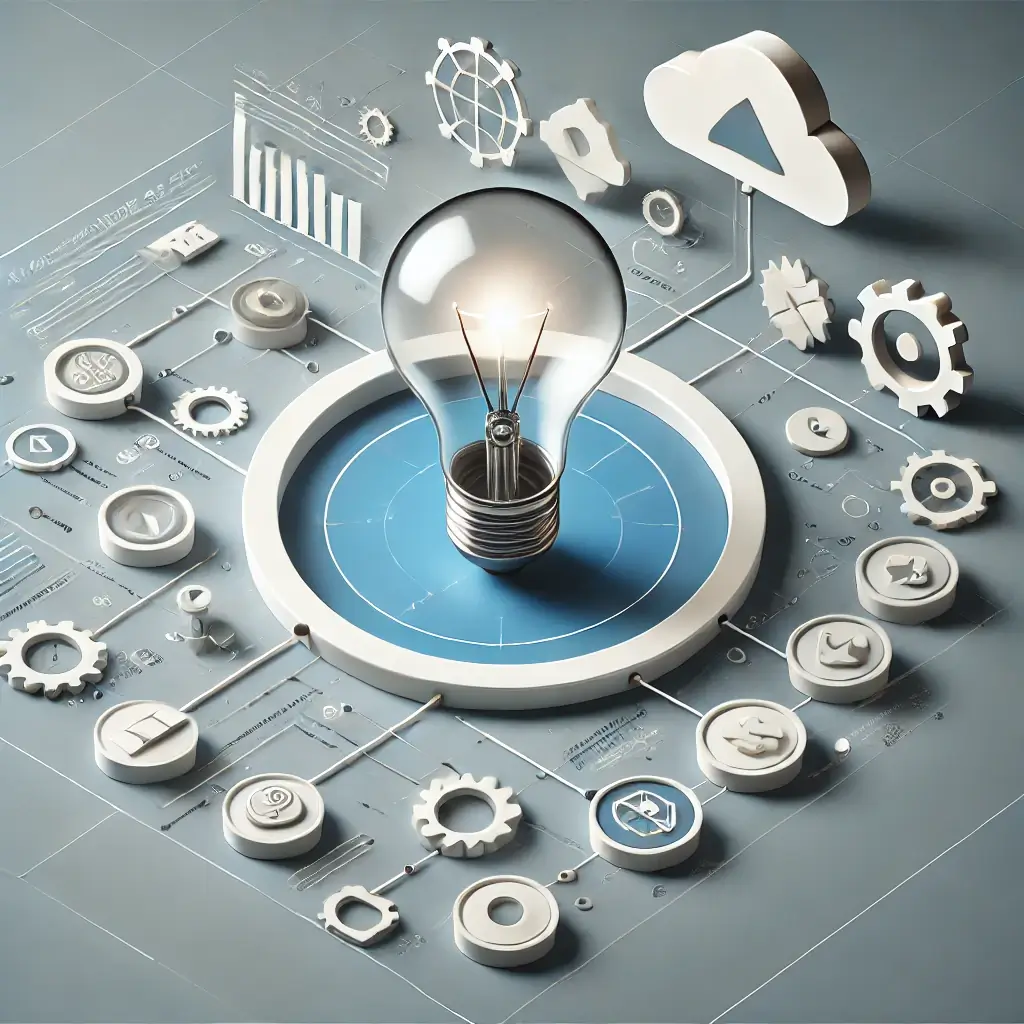· iWork Technologies Team · AI Agents · 5 min read
What are AI Agents? Definition and Basic Concepts
AI agents, powered by large language models (LLMs), are transforming workflow automation by autonomously processing information, optimizing decision-making, and collaborating with other systems to enhance operational efficiency.

AI Agents and Workflow Automation Using LLMs
In the ever-evolving landscape of artificial intelligence, the concept of “AI Agents” plays a pivotal role in transforming workflows through automation and decision-making capabilities. Leveraging large language models (LLMs) in this domain accelerates processes, enabling AI agents to interact intelligently with their environments, analyze data, and optimize workflows across industries. AI agents powered by LLMs are fundamentally changing how businesses and systems operate by enhancing efficiency, scalability, and decision-making accuracy.
In this post, we will explore the concept of AI agents, their integration into workflows, and the significance of using LLMs to enhance their functionality.
What is an AI Agent in the Context of LLM-Driven Workflows?
An AI agent can be defined as:
An AI agent is an autonomous software program capable of perceiving its context, making informed decisions, and executing tasks using tools, reflection, and feedback. When integrated with LLMs, these agents can process natural language inputs, create workflows, plan actions, and continually optimize based on real-time data and learning.
AI agents, driven by LLMs, are particularly effective at tasks involving natural language processing, task orchestration, and multi-agent collaboration within complex systems.
Key Concepts of LLM-Driven AI Agents
Several foundational principles govern how AI agents operate within workflows:
-
Autonomy
- LLM-driven agents can autonomously process information, generate insights, and trigger actions without human input. This allows them to streamline repetitive tasks, such as data entry, report generation, and decision-making.
-
Rational Decision-Making
- AI agents use LLMs to analyze data and provide rational responses or actions, improving the quality and accuracy of workflow management. They assess the context to optimize outcomes and adjust their strategies dynamically.
-
Proactive Workflow Automation
- LLM-powered agents can anticipate future needs and execute proactive actions. For example, an AI agent can schedule meetings, prepare reports, or adjust supply chain processes by predicting future demands based on historical data.
-
Adaptive Learning
- Through continual feedback and interaction with their context, AI agents evolve. Integrated learning mechanisms allow agents to optimize workflows over time, becoming more efficient and adapting to new requirements.
-
Collaborative Workflow Orchestration
- AI agents can collaborate with other agents and human workers. In multi-agent systems, these interactions facilitate seamless workflows, where tasks are distributed among agents to ensure optimal performance.
Types of AI Agents in Workflow Automation
AI agents used in LLM-driven workflows come in different forms, with varying levels of complexity:
-
Simple Task Agents
- These handle basic workflow automation like scheduling tasks or generating routine reports. LLMs enable them to understand instructions and respond effectively.
-
Model-Based Workflow Agents
- These agents maintain a memory of past actions and consider the state of ongoing processes to make informed decisions. For instance, they can manage inventory levels based on supply chain models.
-
Goal-Oriented Agents
- Designed to work toward specific business objectives, these agents can optimize for particular outcomes, such as reducing operational costs or improving customer satisfaction.
-
Utility-Based Agents
- These agents assess different possible actions based on their potential utility and make decisions that maximize the overall value to the workflow. This approach balances factors such as efficiency, cost, and time.
-
Learning Agents
- Agents with adaptive learning capabilities can improve workflow automation over time. Using LLMs, they refine their understanding of tasks and contexts, enhancing decision-making and performance through accumulated experience.
Core Components of AI Agents in LLM-Enhanced Workflows
For AI agents to function effectively in automated workflows, they rely on several key components:
-
Perception (Sensors)
- AI agents perceive their environment via data inputs, such as user commands, system logs, or external APIs. LLMs play a crucial role in interpreting unstructured data, such as natural language.
-
Action Mechanisms (Actuators)
- These agents use actuators to trigger actions within a workflow, such as sending emails, updating databases, or calling APIs to adjust business operations.
-
Agent Program (LLM Integration)
- The core of AI agents in workflows involves integrating LLMs that enable understanding, planning, and generating responses. LLMs empower agents to process language, understand tasks, and engage in complex workflows.
Contextual Awareness in LLM-Driven Workflows
Context is crucial for effective decision-making. AI agents utilize LLMs to interpret and respond to both structured and unstructured data from their environment. They operate in various types of contexts, such as:
- Fully Observable vs. Partially Observable Contexts: Agents may have access to all relevant information or operate with limited visibility, requiring inference.
- Deterministic vs. Stochastic Processes: Agents may work within predictable workflows or navigate uncertain, dynamic environments.
- Static vs. Dynamic Workflows: Workflow conditions may be unchanging, or they may evolve based on user inputs and system states.
Significance of AI Agents in Workflow Automation
AI agents, particularly when driven by LLMs, are revolutionizing workflow automation. They are integral to applications such as:
- Enterprise Resource Planning (ERP): AI agents streamline operations, managing everything from procurement to project tracking.
- Customer Relationship Management (CRM): Agents can enhance customer interactions by automating responses and anticipating user needs.
- Business Process Automation (BPA): AI agents can handle repetitive administrative tasks, freeing human workers for more strategic roles.
By integrating AI agents into workflows, organizations can dramatically increase efficiency, reduce human error, and optimize operations, especially in environments where natural language understanding is critical.
Conclusion
AI agents, especially when augmented by LLMs, are redefining how businesses automate workflows, improve operational efficiency, and make smarter decisions. These agents represent a critical element of AI-powered workflow automation, making them essential for enterprises looking to thrive in today’s digital economy. By understanding the role of AI agents and the power of LLMs in workflows, organizations can unlock new levels of productivity and innovation.

